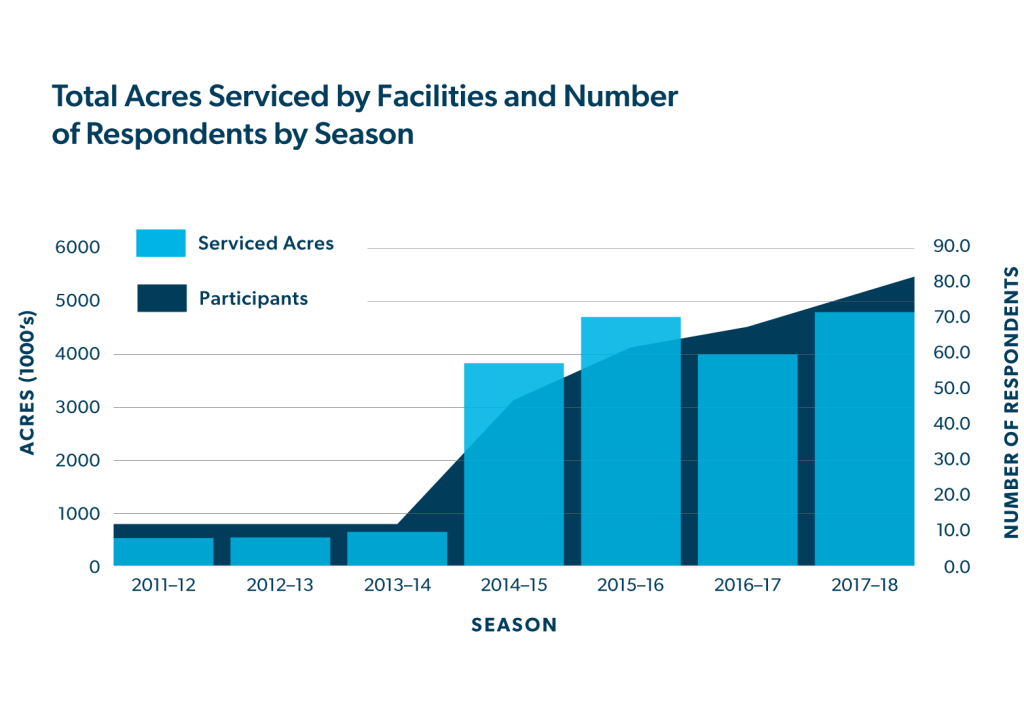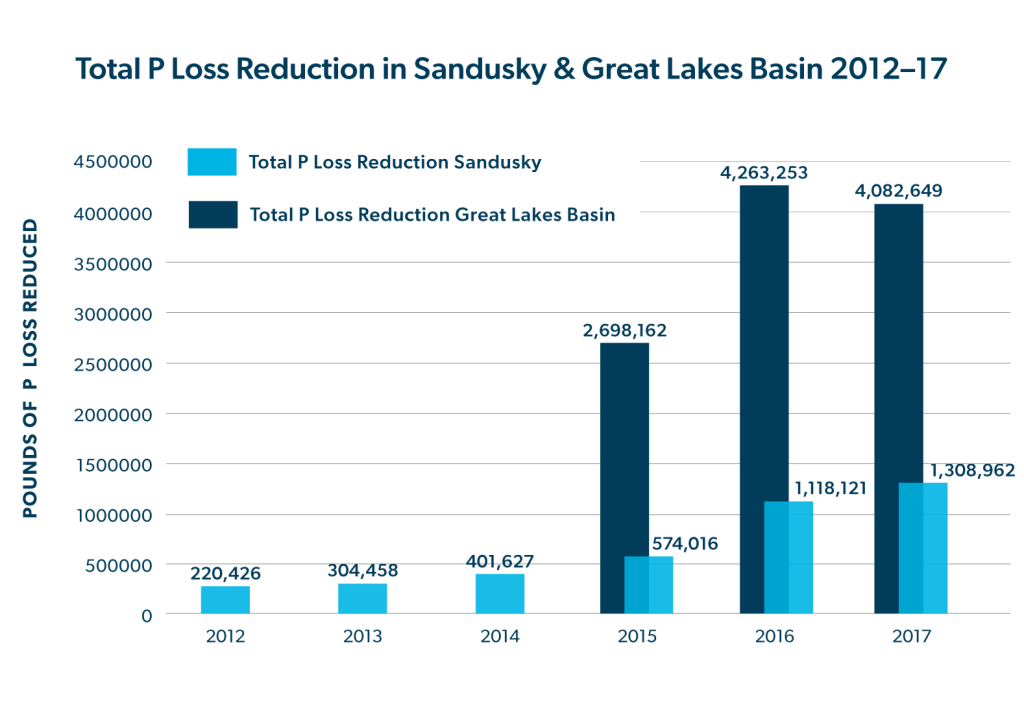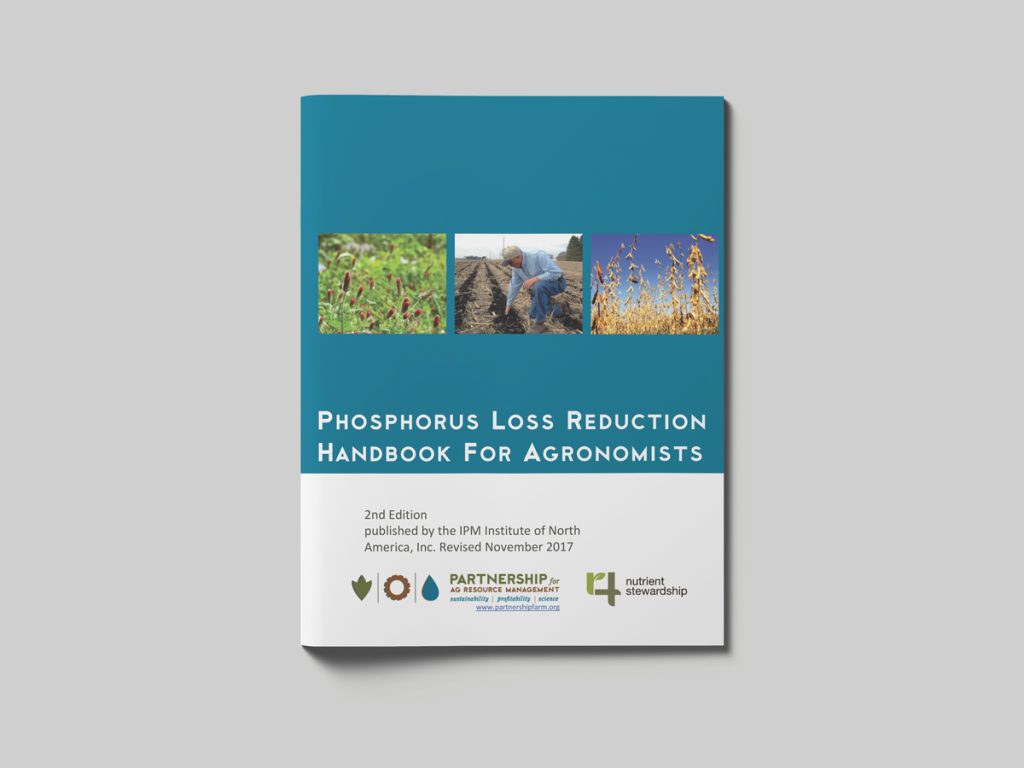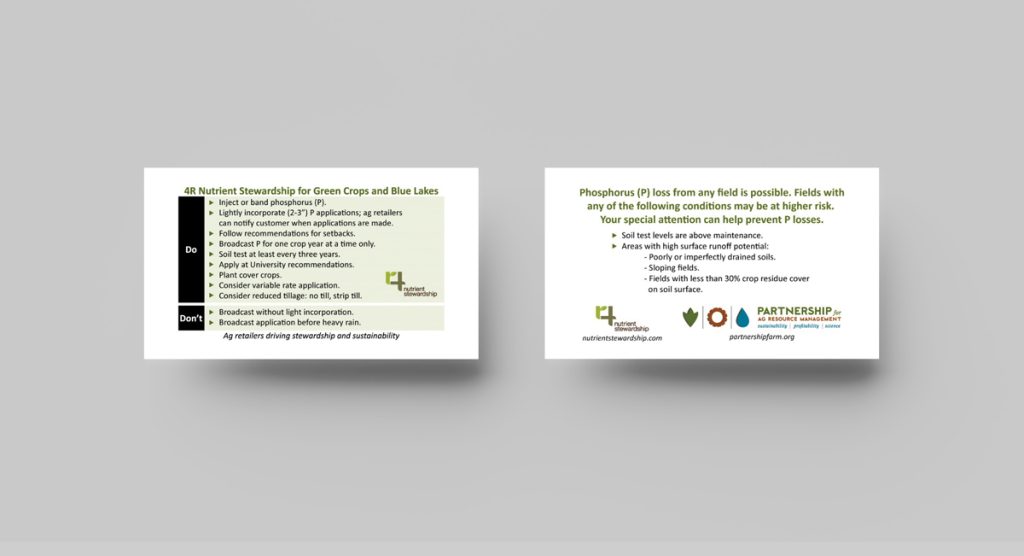Keeping Millions of Pounds of Phosphorus from Entering the Lakes
Agricultural Retailers Implement Great Lakes-Friendly Business Model
- By Catilin Leahy
A Note from Fund Staff
The Partnership for Ag Resource Management (PARM) started as an ambitious idea to prove that agricultural (ag) retailers could make a profit selling products and services that improve water quality. It has become a regional network that empowers ag retailers as a valuable ally in the fight to reduce nutrient pollution in the Great Lakes.
PARM has grown rapidly, starting with a small pilot in 2010 in the Sandusky River watershed in northwestern Ohio, and expanding to include the entire U.S. side of the Great Lakes basin and the Upper Mississippi River basin by 2018. The team estimates over 7,000,000 pounds of phosphorus (cumulative from 2015 to 2017) were kept from waters that feed the Great Lakes. The early data for 2018 shows that 6,000,000 pounds of phosphorus were kept on farm fields and did not enter the Great Lakes or Mississippi River.
Ag retailers and crop advisors, farmers, watershed organizations, non-profits, and academics have come together to upend an outdated business model and make the sale of conservation practices and services profitable for everyone—including the lakes.
PARM is a success story—one that is still being written as it continues to grow across the region. Here is how this project came together, in the words of the IPM Institute team leader, Caitlin Leahy.
This story has been updated with new information since its original posting in February 2019.
Agricultural Retailers Improve Water Quality in the Great Lakes
The Partnership for Ag Resource Management (PARM), a project led by the IPM Institute of North America, began as an idea in 2010 to target ag retailers as a vector for tackling record-breaking algal blooms through the innovative approach of boosting sales in products like cover crops and variable rate technology, already in ag retailer inventories. With a $622,000 grant from the Great Lakes Protection Fund (GLPF), we worked with 12 agricultural retailers in the Sandusky River Watershed in Ohio, to identify, promote, track and report on products and services that keep commercial fertilizers on fields and out of Western Lake Erie.

Dr. Thomas Green, project team leader and IPM Institute president, saw great potential in partnering with ag retailers, a group often ignored when it comes to water quality improvements. Ag retailers and co-ops, who supply farmers with fertilizer, seed and other important products and services, could potentially deliver a triple win—cleaner water, better crops for farmers, and revenue opportunities for ag retailers.
In 2015, with a second investment of $759,000, GLPF helped our project expand its reach from those first 12 retailers representing 534,000 farmer acres to 47 participants servicing over 3.8 million acres in the entire Great Lakes Basin.
Impacts have grown from an estimated 220,426 pounds of phosphorus kept on cropland and out of the Basin waters in 2012, to over four million pounds in 2017.

How Do We Do It?
PARM has achieved this level of success by promoting, tracking and reporting sales of ag retailer products and services that reduce nutrient losses from cropland. This is accomplished through training, communication tools, and annual surveys and reports back to participants.
With support from GLPF, we created a webinar series to increase awareness of water quality issues in the Great Lakes Basin and provide our ag retailer audience with the latest research concerning nutrient management. As of February of 2019, we’ve achieved over 5,800 viewers across the 15 webinars in the series.

We also developed a 4R-approved Phosphorus-Loss Reduction Handbook and 4R nutrient-loss wallet cards to support ag retail agronomist conversations with farmer clients on how different products and services can address water quality concerns. More than 900 handbooks have been downloaded from our website and over 25,000 cards were distributed at no cost to users thanks to GLPF support.

In summer 2018, in a co-branding initiative with GLPF, PARM partnered with Field to Market (FTM), a large multi-party collaboration focused on improving sustainability, on a project overseen by Sustainability Programming for Ag Retailers and CCAs (SPARC) with members including the Environmental Defense Fund, Agricultural Retailers Association, American Society of Agronomy and FTM itself. The project created online courses for ag retailer managers on opportunities in sustainability. The courses offer continuing education units for Certified Crop Advisors and certificates for managers, and are housed on the American Society of Agronomy website under Sustainability 101.
Expanding the Partnership
We currently have over 90 participants in both the Great Lakes and Mississippi River Basins representing over 5.3 million acres, and additional support from the US EPA Great Lakes Restoration Initiative, the McKnight Foundation and the Clean Lakes Alliance, as well as memberships and sponsorships from participating ag retailers, manufacturers and distributors.
GLPF gave us the opportunity to test a concept and then scale up, to engage ag retailers and co-ops to tackle water quality challenges with a market-based solution. Our project has gained national recognition, an accomplishment that would not have been possible without the active support of participating ag retailers and our GLPF partner.
Cover Photo: Randall Hyman
—
Start a Conversation
At the Fund, our goal is to build something—together—that delivers impact. You have an idea and a strategy in mind and we have a basin-wide perspective and experience launching new initiatives. We strongly encourage you to contact us to discuss an idea, whether fully formed or not, as a first step.
Email us at startaconversation@glpf.org